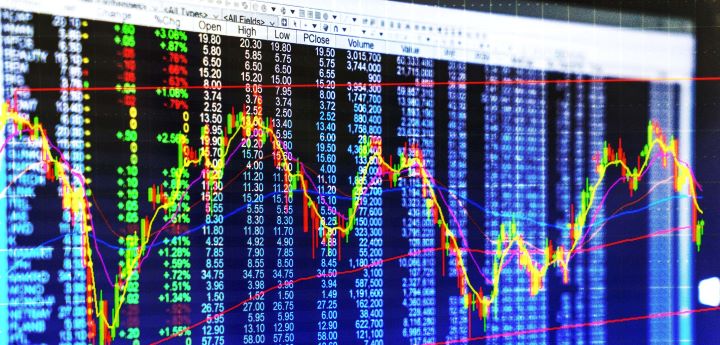Ahead of chairing Room151’s LGPS North conference in April, Gordon Ross, LGPS Central’s CIO, reflects on the friction between markets and central banks. He also examines recent market moves and the prospect of interest rates peaking at 6%.
 Following on from Covid-19 and the ‘Great Liquidity Injection’ (GLI) by many central banks to ensure that most major economies were able to function during the pandemic, the markets (and possibly the economies) are now having to pay the price in a fight against stubbornly high inflation.
Following on from Covid-19 and the ‘Great Liquidity Injection’ (GLI) by many central banks to ensure that most major economies were able to function during the pandemic, the markets (and possibly the economies) are now having to pay the price in a fight against stubbornly high inflation.
Throughout much of 2021 and early 2022, central banks have continuously underestimated the magnitude of inflationary pressures associated with the GLI.
This was initially signalled by an assumption that these inflationary pressures would be ‘transient’, leading to a reluctance to change monetary policy to try and pre-empt such pressures.
The result was that the central banks found themselves significantly ‘behind the curve’ and confronted with rising inflation eventually approaching and beyond double digits in most major economies.
Central banks have been forced to increase interest rates at record-breaking magnitudes, often in monthly increments over 0.75%.
Not surprisingly financial markets reacted poorly to the magnitude and speed of these moves, producing negative investment returns in 2022 amongst the worst seen in several decades across many asset classes. Only cash gave some refuge and offered a modicum of positive investment return.
The current situation has central banks reducing the intensity but not speed of monetary tightening, with markets looking for any indications that inflationary pressures are falling to a level that will allow the policy to be halted with the inflationary ‘beast’ tamed.
Ross will be chairing Room151’s LGPS North conference on April 27 in Manchester, which will offer insight into long-term asset allocation, local investing and the role of illiquid investments. To register for this conference click here.
Market ‘deaf to central bank rhetoric’
At the beginning of 2023, the markets identified that inflation had probably peaked and is indeed likely to decline throughout the year, however, they seem deaf to central bank rhetoric which continuously tries to emphasise long-term inflationary targets, typically around 2% to 2.5% that central banks are aiming to achieve.
January has seen some significant recoveries in market returns as investors have returned to ‘risk-on’ strategies in anticipation that the sharp rate increases must lead to stifling economic growth, potentially leading to recessions and requiring the reversal of the current monetary tightening trends.
In true fashion, markets are trying to glean any sense that the tightening episodes are over, and that there may be an indication that monetary policy will be eased.
In awareness of this, the central banks’ narrative continues to emphasise the ongoing threat of inflation, and whilst the initial downturn in inflation has been evidenced, the move towards a 2% target will prove to be a harder, longer-term battle than seems to be anticipated by markets.
Room151 Conferences – Treasury, Pensions, Housing, Strategic Finance
Identifying ‘terminal rate’
The initial effort of trying to identify the ‘terminal rate’ (the levels are which rates will peak) has economists and markets participant continuously changing levels and targets.
For example, the US Federal Reserve Board’s (FED) voting members initially indicated a level at around 4.5% to4.75%, but as inflation seems stubbornly high, terminal rate levels above5.25% have been spoken about, with some investors talking of a level approaching nearer 6%.
It must be remembered that for over a decade, central banks were trying to achieve inflationary pressures and there were many periods where inflation struggled to hit the 2% target.
The latest rate move by the FED on 1 February saw a 25bp rise further encouraging the markets as the magnitude of moves has been reduced, but the release of a surprisingly strong Non-Farm Payroll data (a rise of 517,000) two days later had the market wondering if the FED had known of the release, would it have led to a larger rate increase?
Subsequent minutes of the meeting showed that some FED members had that had supported a larger rate move (“a few officials favoured or could have backed 50bp rate hike”), but these were predominantly from non-voting members.
Amongst the minutes, previous emphasis was maintained with “FED saw upside inflation risks as key factor shaping outlook” and “all FED officials saw ongoing rate increases as appropriate”. Some interpretations saw the reference to the “upside risks” as a hawkish tilt away from a previous reference to the “disinflationary process has begun”.
With inflation still the priority, the January consumer price index release was disappointing, showing a real acceleration in the monthly changes in goods prices and still-high readings on services and core services ex housing.
‘Reality’ beginning to hit investors
Most recently, the release of the FED’s preferred inflationary indicator, the personal consumption expenditure deflator index (PCE) surprised to the upside recording a monthly rise of 0.6%, and Decembers revised higher to 0.2%, making the year-on-year release at 5.4% from 5.0 % previously.
This was met with a sharp market reaction as though reality is beginning to finally hit the investors that perhaps they should take more notice of comments from Jerome Powell, the FED’s chairman, that inflation is not yet beaten and that there may be more monetary policy moves needed to tame the ongoing inflationary threats.
At the very least, the realisation that higher rates may yet be needed, (the terminal rate is not yet known), and that high rates will be a feature for longer than currently expected.
The potential for rates being cut anytime in 2023 seems increasingly unlikely, a feature that still needs to be priced out of the market levels.
15th Annual LATIF & FDs’ Summit – 19 September 2023
250+ Delegates from Local Government & Investment
The current shape of most major yield curves is inverted and has interest rates declining over the next two years, even though we have not yet achieved the terminal rate maximum in any major market (although the Reserve Bank of New Zealand and Bank of Canada may be close).
Also, certain sectors of the economy continue to be positive and show that inflationary pressures (housing rental, wages and food prices) and the threats of recessionary pressures seem absent.
Much will depend on the continuing support of the economy from consumer demand that remains strong (and sentiment improving) and is currently keeping many economies out of recession, if only by a few basis points. The markets may now look to central bankers and potentially pay more attention to the rhetoric displayed?
It certainly seems that ‘round 1’ has gone to the central bankers who are approaching levels of monetary policy that are close to being in line with the inflationary problems or levels faced and endeavouring to paint a realistic picture as to the direction of policy.
Central banks ‘winning’ against inflation
Longer term, I believe that the current battle against inflation will be won by the central banks with terminal rates under 6%, but this will not lead to a return to inflation levels of 2% (nor indeed hard recessionary landings).
Instead, the current economic cycle will be declared as the new period where economic growth will need to be encompassed by a higher level of inflation around the 3% to 4% range.
The recent sharp or speedy increase in rates will eventually influence inflation or growth most likely to be most noticeable in quarter two of 2023 as the lagged effects take hold, but nonetheless, rates will stay higher for longer.
The markets may price lower rates into 2024, but not a pivot in 2023 that still needs to be priced out of the markets.
Employment, the other declared focus of the FED, will continue to remain tight, with layoffs or redundancies remaining at record low levels (seen in weekly claims data, however some sectors are seeing higher employee reductions). Wage pressures should decline gradually as the supply imbalance normalises.
Gordon Ross is the chief investment officer at LGPS Central. Ross will be chairing Room151’s LGPS North conference on April 27 in Manchester, to register click here.
—————
FREE weekly newsletters
Subscribe to Room151 Newsletters
Follow us on LinkedIn
Follow us here
Monthly Online Treasury Briefing
Sign up here with a .gov.uk email address
Room151 Webinars
Visit the Room151 channel















